Sharlyn J. Lauby's Blog, page 54
May 8, 2022
Mental Health Benefits Are a Key Part of the Employee Experience

Estimated reading time: 3 minutes
A couple of years ago, I shared Dan Schawbel’s book “Back to Human: How Great Leaders Create Connection in the Age of Isolation”. The book talks about how technology can be a contributing factor to loneliness as well as the impact that loneliness has on our work. It’s a great read especially as organizations are thinking about onsite, remote, and hybrid working arrangements.
Loneliness doesn’t just have a negative impact on our work. The Centers for Disease Control and Prevention have shared information connecting loneliness to serious health conditions and offered some resources to help individuals who want to seek help.
One of the things that I believe it’s important to understand is there’s a difference between loneliness and being alone. Individuals can feel incredibly lonely and be surrounded by people all the time. Loneliness is about connection and a lack of connection can impact our mental health.
The reason that I’m bringing up loneliness is because the Society for Human Resource Management (SHRM) recently released the results of a survey about mental health. It’s a part of their “Mental Health in America: A 2022 Workplace Report”. The survey of HR professionals indicated that:
72% believe that offering mental health benefits would attract new talent. 88% said that offering mental health resources can increase productivity. 86% believe that offering mental health resources would increase retention.78% felt that offering mental health resources would boost organizational return on investment (ROI).I think this is a pretty compelling survey. A clear majority of HR professionals believe that mental health benefits are important. And they are important at multiple phases of the employee experience – hiring, engagement, and retention.
Over the past couple of years, I’ve heard more than one person say, “I knew mental health was important, but I didn’t realize how much until we started dealing with the pandemic.” I completely understand where that comment is coming from. Organizations have an opportunity to do something about it.
There’s one other aspect of offering mental health benefits that I believe organizations should be prepared to address. And that’s the mental health of their leadership and management teams. There’s a huge amount of pressure on HR professionals and operational managers right now. Organizations need to make sure that the pressure is manageable.
I’m not talking about a couple of rough days and doing some retail therapy in the name of self-care. Organizations really need to make sure their employees are in a good place. Because if managers and HR don’t feel like they can take care of themselves, how are they going to take care of the rest of the team?
I don’t have all the answers here. But I do know that as organizations are thinking about their future, they need to consider the mental health of their workforce. It’s important to everyone. Offering benefits in this area will allow employees to access the resources they want and need.
Image captured by Sharlyn Lauby while exploring the streets of Fort Lauderdale, FL
The post Mental Health Benefits Are a Key Part of the Employee Experience appeared first on hr bartender.





May 5, 2022
Organizations Should Support Election Engagement
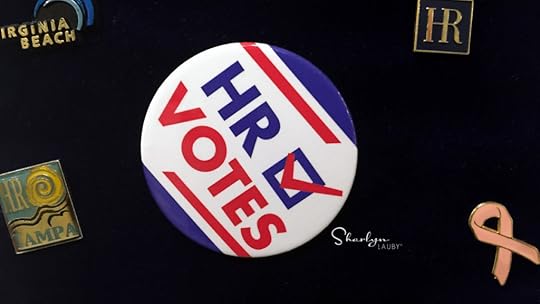
Estimated reading time: 4 minutes
There was an article in The New York Times Dealbook newsletter recently taking about support for an organization called Civic Alliance. It’s a nonpartisan coalition of businesses that have made a pledge to encourage employees and consumers to engage together in civic life, specifically elections. Some of the businesses that have taken the pledge include Airbnb, Amazon, Capital One, Deloitte, Facebook, Intel, LinkedIn, SAP, Target, and Verizon.
In the United States, there’s a midterm election being held on Tuesday, November 8, 2022. All 435 seats in the House of Representatives and 35 of the 100 seats in the Senate will be contested. 39 state and territorial gubernatorial, along with numerous other state and local elections will be contested. I’m talking about elections and voting today for two reasons:
First, organizations need to be aware of the laws in their state about voting. The Society for Human Resource Management (SHRM) has an Express Request on State Laws and Time Off for Voting. If your organization doesn’t have a policy in place regarding voting leave, SHRM also has a sample policy that you can use to draft one. Employees want to know this information so they can make plans to vote. Companies do not want to be accused of repressing an employee’s right to vote. Let employees know the policy – and let them know early.
And that leads to my second point. Please go vote. Find time to get educated about the issues that are important to you and go vote. I do not spend a lot of time here on HR Bartender talking about politics, but I do believe participating in voting is important.
Learning about voting and the issues being debated takes time, so I thought it would be good to share some resources now. Consider building some time into your schedule now versus waiting until the last minute. I know that if I wait until right before election day, trying to learn about all the candidates and their stance on the issues becomes quite daunting.
There’s been a lot of talk about voting rights over the past few years. Before the last election, I decided to get myself educated and read a couple of books on the topic. Ben Sheehan’s “OMG WTF Does the Constitution Actually Say?: A Non-Boring Guide to How Our Democracy is Supposed to Work” is a great way to digest our founding document. The book not only shares the actual wording from the Constitution, but it offers an easy to digest interpretation. I also read Kim Wehle’s “What You Need to Know About Voting and Why”. Wehle is a law professor and legal analyst, so the content is a bit heavier, but it is a reminder that the right to vote is important and not to be taken for granted.
Many of the issues being debated in Congress are workplace issues. The outcome of midterm elections could have an impact on employers and employees. If you’re looking for a place to start your research on some of the legislation related to work, don’t forget that SHRM has an advocacy page that shares public policy issues.
In addition to being educated on workplace issues, another aspect to election engagement is getting informed on social issues. Sadly, misinformation and disinformation are still prevalent. I’ve written before about media literacy being a business competency and knowing how to navigate digital information. It’s a good reminder to double check your sources as you’re forming opinions. I know I will be.
I’d like to believe we can all agree that voting is important, regardless of our views. Encouraging people to vote makes sense. People need to participate in the process. That means having policies and practices in place that encourage election engagement.
Image captured by Sharlyn Lauby at the SHRM Annual Conference in Washington, DC
The post Organizations Should Support Election Engagement appeared first on hr bartender.





May 3, 2022
Managers Try to Keep BOTH Executives and Employees Happy
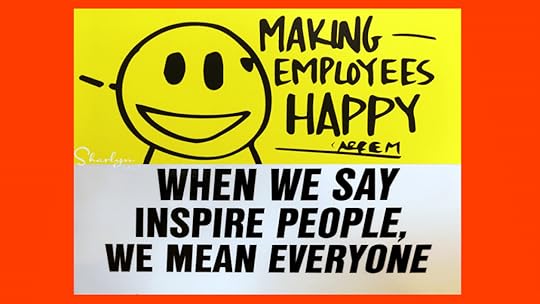
Estimated reading time: 4 minutes
Managers have three roles in the organization. They’re responsible for their department and/or employee team. They’re also a colleague to other managers. Lastly, they report to someone in senior management. All these roles are important. But I came across a couple of articles recently that made me realize that their roles could be placing them in a sticky situation.
First, I read an article in The New York Times DealBook newsletter where they asked ten recent graduates what they’re looking for in an employer. One of the top answers was “values”. Yes, salary and benefits are important. But so is company culture. The article cited a survey that said 61% of younger workers would prefer to work at companies that take a stand on social issues. And 49% they would quit a job that didn’t align with their values.
The second answer to the “What are you looking for in an employer?” question was flexibility. This isn’t about whether people want to work hard. I believe that most people are okay with hard work. They just want to do it on their terms. It could be remote, onsite, or hybrid. It could be day or night shift. Employees want to be held accountable for the work, not the location and schedule.
Neither of these responses should be a surprise. In fact, I might go as far as to say that not only do younger workers want their employers to have values and offer flexibility, but ALL employees want their employer to have values and offer flexibility.
Managers play a huge role in assigning the work as well as when the work should be completed and where it should be completed. Organizations rely on managers to know the pulse of what their direct reports are thinking and the best way to support them getting the job done. We want managers to support their teams.
Shortly after I read the DealBook article, I read a CNBC article titled “Making sense of why executives are eager to get employees back in the office”. One of the sentences in the article really jumped off the page for me. It said that many executives are “falling back on antiquated views of work to make inferences about what’s important for a company to flourish”. My takeaway was that executives want a work environment that looks more like 2019 (aka pre-pandemic).
And in some ways, we are being faced with some of the same pre-pandemic challenges. For example, the unemployment rate is very close to pre-pandemic levels. But we can’t just forget the past two years happened. In fact, organizations would be well positioned if they took the lessons of the past two years and brought them into the company culture.
For example, companies don’t have to go 100% remote. I’ve talked with many employees who are looking forward to spending time in the office. But this doesn’t mean that organizations couldn’t benefit by keeping the concept of employee flexibility in mind.
It also means that organizations should continue to demonstrate that they care about values. Over the past couple of years, organizations have spent a lot of energy saying they support the communities that are supporting them. Organizations need to remember this as we begin to wear our masks a little less.
This gets back to my comment at the beginning of the article about managers. Right now, managers might feel that they are stuck in the middle of what the executives want and what the employees want. And they’re trying their best to keep both sides happy. That’s not where our managers should be right now. And for many managers, this isn’t a winning situation.
It’s a candidate and employee market right now. Managers are the key to talent success. Organizations need to support managers so they can support their teams.
Image captured by Sharlyn Lauby at the SHRM Annual Conference in San Diego, CA
The post Managers Try to Keep BOTH Executives and Employees Happy appeared first on hr bartender.





May 1, 2022
Get Career Insights from People of All Ages – Ask #HR Bartender

Estimated reading time: 4 minutes
One of the things I’m starting to hear more about is “job seeker remorse”. It happens when someone makes a quick career decision about changing jobs or companies, only to discover that their new opportunity isn’t as great as they imagined. In fact, our friends at UKG just released some new research indicating at 43% of people who quit their jobs during the pandemic admit they were actually better off at their old job. And 1 in 5 have already boomeranged back to their former employer.
No one wants to be in this situation, which is why I believe today’s reader note is very timely.
I’m a retired HR in-house consultant. My role is to help new supervisors learn to become effective managers. After a few years of early retirement, my son asked me to teach him the same resilience and self-management strategies to help him deal with his supervisor, who was also young and ill-equipped to manage people. Subsequently, several my son’s friends came asking for similar help. So many young people will face working with ‘bad’ managers and there are few free resources to help them. I’d like my 3rd Act to help my son’s generation so they can collectively thrive.
Would you please point me towards any research exploring how iGen (sometimes identified as Gen Z) hires adjust to work world? Where is the friction? Where are the opportunities? For both employees & employers.
Young workers face a plethora of future challenges: the gig economy, fewer permanent positions, fewer employers offering pensions, less training/career development support – while exhibiting higher rates of mental health issues, underdeveloped social skills, and minimal emotional resilience. Now, task an inexperienced, ineffective supervisor to manage these workers: it’s a recipe for bad outcomes for both the employee and employer. New workers don’t know what they don’t know. I want to provide those who wish to find out with a free way of learning how to be a great hire while being a healthy well-rounded individual.
First, let me say that I love how this reader is putting their talents to great use. And that they’re thinking about their future as a retiree. There’s no reason to feel as we get older that we can’t learn new things and even have career goals. As I read this note, I felt there were aspects of it that aren’t age specific. I know people in my age bracket that want and need mental health benefits. They are facing career challenges because organizations have decided to “hire” young professionals and “contract with” older pros. And they have their fair share of bad managers who have little or no training.
Regarding the question about research specifically aimed at younger professionals, I don’t have a study that I can site. But I do want to share a couple of thoughts.
One of the first career resources that came to mind was Dan Schawbel, best-selling author and managing partner of Workplace Intelligence. We had Dan on an HR Bartender podcast episode recently where we discussed how technology can make the workplace more human. Dan is great about sharing workplace data, so I would check out his books, podcast, and social media accounts. He’s also done extensive research about the Millennial workforce. I know it’s not iGen, but it could be a good place to start.
The other career resource that I would encourage is intentionally finding someone who isn’t in the same age bracket. I believe there is value in the cross-generational conversation. Sometimes that value is making the decision “that’s something I don’t want to do”.
The last career resource I want to emphasize is self-management. The reader mentions it in the note above. Regular readers of this blog know I’m a fan of self-management principles. We can use the principles to find the career development resources that work best for us. I do feel that self-management involves a tremendous amount of self-awareness, so some of the research that individuals need to do includes getting to know themselves.
If you have any resources that you feel would be helpful, please leave a comment below. I’m sure this reader would appreciate it. Knowing ourselves and what we want from our career is so important. No one wants to have “career remorse”.
Image captured by Sharlyn Lauby while attending the SHRM Annual Conference in Chicago, IL
The post Get Career Insights from People of All Ages – Ask #HR Bartender appeared first on hr bartender.





April 28, 2022
Use a Decision Tree to Decide Where Work Should Be Done

Estimated reading time: 3 minutes
One of the big decisions that organizations are facing right now has to do with where work gets done. Is it onsite? Or maybe remote? Maybe it could be done in either?
This might not sound like a hard decision…but I think it’s more complicated than it looks. One location could make the work take longer and negatively impact productivity. Some work might involve multiple people and get completed faster if everyone was in the same location. Now could be the perfect time to re-examine the work that employees need to complete and figure out the best location for that to happen – a location that makes sense for the business and the employee.
Which is why it might be helpful to create a decision tree to facilitate the process. A decision tree is a way to flowchart the criteria that will be used to make the decision. For example, the U.S. Air Force put together a decision tree to explain their rules of engagement for social media.
I started thinking about decision trees and work location after reading Keith Ferrazzi’s new book “Competing in the New World of Work: How Radical Adaptability Separates the Best from the Rest”. There’s a section in the book that talks about “decision dials” in reference to work. I don’t want to give away too much in the book, but some of the factors that Ferrazzi says organizations need to think about include:
Can the work be automated, or must it be completed by a person?Is the work project-based (and able to be completed by a freelancer) or traditional (and completed by an employee)?Should the work be completed onshore or offshore?Can the work be completed by an individual contributor, or does it need to be done by a team?That’s what makes me think a decision tree would be a helpful starting point. Organizations can develop their list of factors to consider. If you need some guidance on establishing the factors, Ferrazzi’s book is a solid place to start, and it has data to back up the list.
Personally, I believe organizations have a real opportunity to improve the employee experience and their bottom-line by bringing flexibility into work. And HR departments are well positioned to be the architects of this new work environment. We can help the organization redesign where the work gets done. Employees can be more productive, which will make them happy. Companies can benefit from better productivity, which makes them happy.
There aren’t many times when we can create a situation where both employees and employers benefit. Work flexibility could be one of them. But it does take doing some research and outlining a decision making structure that will create equity – based on the work that needs to be done.
The post Use a Decision Tree to Decide Where Work Should Be Done appeared first on hr bartender.





April 26, 2022
HR Service Delivery Helps Improve the Employee Experience

Estimated reading time: 5 minutes
(Editor’s Note: Today’s article is brought to you by our friends at Neocase , a provider of cloud solutions for HR transformation. For 20 years, Neocase has been offering solutions to improve the employee experience. They recently announced a new Employee Journey solution that provides a customizable complete onboarding to offboarding experience . Enjoy the article!)
Regardless of the unemployment rate, organizations continue to be focused on hiring and retaining the best talent. That means creating an employee experience where individuals get the information they need at the moment they need it. In fact, in a recently updated article titled “The Employee Experience Platform: A New Category Arrives”, author Josh Bersin talks about using technology as a way to deliver a great experience to employees.
I was reminded of the Bersin article as I was reading Neocase’s “The Ultimate Guide for HR Service Delivery”. When you have a moment, I would recommend checking out the guide. It reinforces the connection that technology can be used to help organizations deliver great employee experiences.
But we also need to realize that organizations are trying to find ways to deliver a great employee experience in an effective and efficient way. And effectively and efficiently aren’t simply business buzzwords. Effectively meaning that the organization is meeting (or exceeding!) goals and efficiently means in the most cost-effective way possible.
That’s why I want to spend some time today to talk about HR Service Delivery (HRSD). HR Service Delivery helps organizations operate more effectively and efficiently. HRSD does that using a suite of tools and processes to support employees and deliver better experiences. A few of the tools included in HR Service Delivery include:
Business Process Automation (BPA) is exactly what it sounds like. Organizations can use technology to automate manual processes. A great example is using BPA for new hire paperwork. Then the organization can use another tool – digital document management – to store those forms!
Employee Self-Service allows employees to do many of the functions related to their employment like reviewing and updating their personal information.
Case Management allows employees to ask questions and get answers. In our personal lives, we expect to have our problems solved and to have it done in speedy fashion. Like an employee requesting an employment verification so they can sign an apartment lease. The case management tool provides prioritization so time sensitive inquires get answers first.
Knowledge Base is like a FAQ for employees. It’s an online environment where employees can get answers to common questions like “How do I request time off?” or “When is benefits open enrollment?” Like the case management tool, employees expect to get answers quickly and hopefully have them at their fingertips, like on their phones or other mobile devices.

HR Service Delivery is focused on delivering that great employee experience in an effective way, which in turn helps the organization become more efficient.
HR Service Delivery: 4 BenefitsNow that we’ve talked about what HR Service Delivery is, let’s discuss the benefits to implementing this model.
First, employees get an experience like what they have in their personal lives. I’m listing employees first intentionally. While HR and the organization benefit from HR Service Delivery, the reason for doing this is employees and improving their experience. Today’s technologies have already trained us for this. Got a new address? Update it online. It’s fast, I can do it on my time and know it will be entered correctly. Got a question? I can look up the answer on a FAQ. And if I can’t find the answer, I can contact HR via a contact form and I know they will get back to me.
The second benefit goes to human resources. HR departments can use HRSD to provide answers to regularly asked questions via a knowledge base environment. This process change allows them to focus on employee questions that are unique and/or need extra attention. The case management system also allows HR to prioritize those individual requests, making better use of their time. In addition, HR can view the types of requests they’re receiving via a dashboard. This could offer additional insights maybe for a new FAQ or how-to guide that makes the employee’s experience better.
The third benefit goes to the manager. When employees need to visit HR, managers often become part of the situation. The employee might initially ask their manager the question and the manager doesn’t know the answer. Or they don’t want to admit that they don’t know the answer. The employee might become distracted because they need to find time to visit HR and have to ask the manager for permission. Or the manager isn’t able to spare the employee to let them visit HR. Regardless, giving employees the ability to find their own answers and work with HR directly is something that managers want. It allows managers to focus on the work and keep the department running.
The last benefit belongs to the company. Remember the goal: great employee experience delivered in an effective and efficient way. When employees are getting answers, everyone wins. Employees are happy because they’re focused on the work (and not the paperwork). Managers are happy because they’re getting stuff done. And, HR is happy because their time is being spent on the right things.
HR Service Delivery = Better Employee ExperiencesIt really isn’t a surprise that organizations are looking for ways to deliver a great employee experience while being more productive and fiscally responsible. The good news is that technology can help with that. In fact, technology tools have a proven track record of effectiveness and efficiency when it comes to our activities as a consumer. It only makes sense that HR Service Delivery would be able to bring the same benefits to the employee experience.
If you want to learn more about HR Service Delivery and how it can benefit your organization, download Neocase’s “Ultimate Guide for HR Service Delivery”. I found it to be an informative read on strategies for creating a better employee experience and optimizing HR.
The post HR Service Delivery Helps Improve the Employee Experience appeared first on hr bartender.





April 24, 2022
Employee Benefits: Cafeteria Plans Offer the Options Employees Want
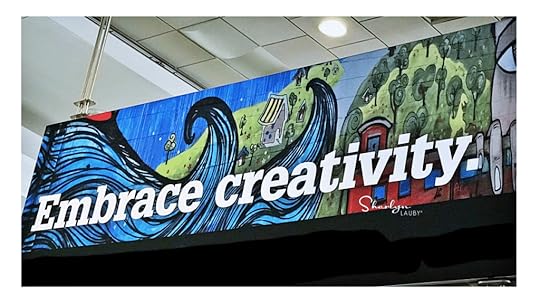
Estimated reading time: 5 minutes
I recently attended the Society for Human Resource Management (SHRM) Talent Conference in Denver. And I can’t wait to share with you all my takeaways from the event.
An area of focus during the conference was benefits. Specifically, it was about employers giving employees options to choose what they want. This is often referred to as a cafeteria plan or a Section 125 plan, which refers to a section of the U.S. Internal Revenue Service (IRS) code.
To help us understand more about cafeteria plans, I reached out to my friend Carmen Miller, CEO of McKinley Insurance Services, a full-service agency located in Fort Lauderdale, Florida. Carmen has spoken with us before about staying true to our values and today she’s sharing her knowledge of cafeteria plans.
Carmen, thanks for being here. Let’s start with a definition. What is a cafeteria plan? And what types of coverages are typically included?
[Miller] Cafeteria plans are about CHOICE. They give employees the option to CHOOSE how to spend their benefit pre-tax dollars. Basically, an employee is given a specified amount of benefit dollars to spend as they choose.
Cafeteria plans typically include health plans such as medical, dental, vision, critical illness, term life, and other voluntary type benefits. It could also include 401(k) retirement type plans as well as HSAs (Health Savings Accounts) and FSAs (Flexible Spending Accounts) and Dependent Care Accounts.
My recollection is that cafeteria plans were very popular years ago, then kinda waned for a while, and now they’re back. Has anything really changed with cafeteria plans? Or is this new popularity being driven by recruitment and retention?

[Miller] Not much has changed with the plans from years ago but the new popularity, like everything, has been fueled by the pandemic. Over the past couple of years (2020 and 2021), some extensions were given regarding the carryover of benefit funds and a grace period for use of those funds for those years.
I think as times have changed so have the cafeteria plan needs, thoughts, and concerns. People are thinking differently about their benefits and yes, recruitment and retention are playing a big role in this. People want flexibility in everything including their benefit options and people want to make choices to meet their needs. There is no “one benefit fits all” anymore. It’s the society we live in. Personalization and customization of benefits is a very important consideration when looking at job opportunities.
Why would an organization want to offer employees a cafeteria plan?
[Miller] Offering a cafeteria plan shows employees that they have choices and can make choices based on their own personal needs. It allows flexibility. There can also be tax savings for not only the employer but also for the employee. Typically, an employee’s contributions toward a cafeteria plan are made pre-tax and the employer’s contribution is not taxed.
Why would employees want to work somewhere that offers a cafeteria plan?
[Miller] For those employees who have a specific need for medical or retirement planning, selecting an employer that offers options through a cafeteria plan allows them to choose what works best for them. When there is limited to no choice, employees will feel as if they are being ‘told’ what to do versus making a choice as to plan options and offerings. Let’s face it, when it comes to benefits, employees want to take care of themselves and their families as best they can. Cafeteria plans let them do that.

Last question, if an organization wants to explore cafeteria plans, name 2-3 things they should do to start the process.
[Miller] Two things immediately come to mind: plan documentation and education.
Plan Documentation: These pre-tax plans provide tax savings to the employee and employer and are governed by the IRS, and you can’t just ‘say’ we are going to pre-tax premiums. Organizations must have the appropriate documentation in case of an audit. These documents are usually handled by your insurance broker or payroll processing company, and it is the responsibility of the organization to keep a copy and update these documents annually. There are also companies that will do these documents for you.
Education: There are benefits to cafeteria plans but it’s not always obvious. Educating employees about plan benefits can be time consuming. Employers and employees need to take the time/allow the time to learn about the options and how it can effect/benefit them.
A huge thanks to Carmen for sharing her knowledge with us. If you want to learn more about cafeteria plans, you can check out the McKinley Insurance Services website.
I totally agree with Carmen’s comment about employees wanting choices. We’re seeing this in the discussions about flexible scheduling and remote work. It’s not a surprise that employees want choices in their benefits as well. And this doesn’t mean that companies need to necessarily pay more. Cafeteria plans allow organizations to give employees the options they want so they can get the benefits they need.
Image captured by Sharlyn Lauby while attending the SHRM Talent Conference in Denver, CO
The post Employee Benefits: Cafeteria Plans Offer the Options Employees Want appeared first on hr bartender.





April 21, 2022
Returnship Programs Can Help Organizations Hire Great Employees
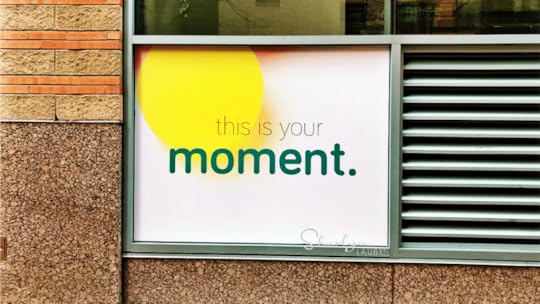
Estimated reading time: 3 minutes
I read a Harvard Business Review article recently titled “Return to Work Programs Come of Age”. The article was about hiring employees who have been out of the workforce for a while. And by a while, I mean years. The reasons could vary from parenting to caregiving to retirement. It’s a good read and definitely an idea worth consideration.
One of the things that I found interesting in the article was the conversation about bias. It’s something that recruiters and hiring managers need to ask themselves. Do I have a bias when it comes to gaps in a candidate’s employment history? Or do I have a bias when it refers to the reason why a person might have a gap in their employment history? For example, is it okay when a person takes time off for parenting but maybe not so much for retirement?
If organizations want to find and hire the best employees, they’re going to have to start looking at these types of biases. Individuals who have taken time off – for whatever the reason – have skills. In fact, the time they’ve spent away from the office environment could have be an asset to their career development. Think about that!
But this doesn’t mean that hiring an individual who has a gap in their employment history doesn’t need some extra onboarding time. That’s where the HBR article comes into the conversation. They mentioned an activity called a returnship that might make sense.
Think of a returnship like an internship for returning employees. It could be for a short-term project or assignment. The purpose of the returnship is to help new employees who have been away from the workforce for a while get reacclimated to the work culture and contribute to the project. The company could bring in a handful of returning employees at the same time. The group receives specialized onboarding and training. It could also be helpful to include a buddy or mentor.
A returnship could give the organization a chance to work with talented professionals who bring some unique skills and perspectives to the work. It could also help individuals who are considering a full-time move back to the workplace. At the end of the returnship – just like an internship – there can be a discussion about continuing with the company.
If your organization wants to consider creating a returnship program, think about getting a project sponsor. This should be someone in the senior leadership team who will champion the project and help to secure the necessary resources to make it successful. Also, designate a returnship program manager who can answer questions and make sure the program is implemented properly.
The program manager can also be the point person to communicate what the program is and how it will benefit the organization. It could make sense to allow employee referrals into the returnship program. And the manager can track the program’s success. The organization might want to consider getting testimonials from returnship participants to share internally and externally. (Side note: Please check with your legal department about getting authorization to use testimonials in recruitment marketing.)
The challenges we’re seeing with recruiting aren’t going to go away anytime soon. Regardless of “The Great Resignation”, statistically we’re hearing that the number of people entering the workforce is smaller than the number of people leaving it. That’s because of birth rates. So, creating programs that will allow the organization to hire and cultivate talent are essential to long-term recruiting success.
Image captured by Sharlyn Lauby while exploring the streets of Kansas City, MO
The post Returnship Programs Can Help Organizations Hire Great Employees appeared first on hr bartender.





April 19, 2022
Social Media Background Checks: What Employers Should Know

Estimated reading time: 7 minutes
(Editor’s Note: Today’s article is brought to you by our friends at Accurate Background , a leading provider of compliant background checks, drug and health screenings, and Form I-9 verifications. They’ve been named to . Congrats to them. Enjoy the read!)
When you look at the entire recruiting process, the activity that takes the longest is the interview step. Makes sense. It can take weeks to screen candidates, schedule interviews, and meet with everyone being considered for the job. In my experience, sometimes because the interviewing step takes so long, hiring managers might feel rushed to make a final decision.
And frankly, rushing to select the best person for the job can cause managers to make poor decisions. That’s why I think organizations need to make sure they pay the proper amount of attention to the evaluation and selection step of the process. I’m not saying that selection needs to take the same amount of time as interviews. Just don’t rush it.
One of the key activities that happens during the selection step is background checks. It might be tempting to simply skip this step to speed up the process, but background checks perform a valuable purpose. For example, an emerging type of background check is the social media background check. I think a lot of organizations are or should be curious to learn more about this specific type of background check. That’s why I asked Bon Idziak, chief compliance and government relations officer at Accurate Background, to give us a primer on the topic. Accurate provides organizations with background check services including credit, criminal, and social media.
Also, just a quick reminder here that while we’re talking about compliance matters, we’re not dispensing legal advice. It’s always a good idea to bring your own legal and risk teams into the conversation.
Bon, thanks so much for being here. Just to make sure that we’re all on the same page, let’s start with an explanation. What’s a social media background check? I’m sure it’s not Googling the candidate.

[Idziak] No, it’s not simply Googling the candidate. In fact, if you’re currently Googling candidates, please stop. To avoid bias —intentional or implicit — a third party should conduct a social media background check. A social media background check is an unbiased review of a candidate’s social media profiles. Social media screens use artificial intelligence (AI) and human analysis to flag many different types of undesirable content, including inappropriate photos or videos, indications of excessive levels of drinking or drug use, inflammatory or discriminatory commentary related to things like race, gender, religion or sexual orientation, criminal activity, bullying, and more.
While employers may use the information discovered in a social media screen to make employment-based decisions, they must still adhere to the Equal Employment Opportunity Commission (EEOC) guidance and follow the same pre-adverse and adverse action rules prescribed by the Fair Credit Reporting Act (FCRA). That’s why partnering with a reputable background screening provider, such as Accurate Background, is so important.
Why should an organization consider conducting social media background checks?
[Idziak] Social media screening is all about reputation management. Social media background checks allow employers to minimize risk by providing a level of insight into a candidate that simply can’t be found on a resume. A person’s social media profiles offer visibility into who they are outside the workplace and whether their behavior aligns with company values.
In your experience, what types of jobs typically include (or should include) a social media background check?
[Idziak] Employers should consider screening social media for all candidates. However, priority should be on management and public-facing positions, especially those in which the employee will use social media or maintain a social media presence. Some clients choose to screen for management positions and above, while others screen for all positions. It’s up to the individual employer to determine their needs and available resources.
When it comes to the actual background check, do organizations select what social media platforms they want checked? Or is this a general “all around the internet” search?
[Idziak] At Accurate, our social media screening tool uses AI to analyze up to seven years of public posts on the top five platforms — Facebook, Instagram, LinkedIn, TikTok, and Twitter.
Logistically, how does the process work? Meaning, does a candidate know that the background check is being performed? And do they have to authorize it?
[Idziak] Disclosure and a written authorization is a mandated component of the background screening process. Before an employer can conduct any employment-related background check, whether criminal or social media or otherwise, they must first make a disclosure to the candidate, followed by a written authorization, per the FCRA. This includes social media screening.
Depending on where the employer and candidate are based, this typically happens after an initial offer of employment is made. Employers can and should make all offers of employment contingent upon the successful completion of a comprehensive background check.
I’m sure one of the concerns regarding social media checks is that people post their celebrations (i.e., including drinking adult beverages) and frustrations (i.e., at companies and politicians). How does this factor into a social media background check? Do organizations get this information? Or can they specify in advance what they receive in the report? For example, companies can say, “We only want to know if someone is doing something like participating in a rally advocating hate crimes.”
[Idziak] The AI-powered tool is designed to home in on specific problem areas, such as hate speech, bullying, harassment, and illegal activity. While posts with these activities may appear in the report, it’s up to the employer to have a policy around what information they determine to be actionable.

You’ve mentioned that social media background checks require an authorization as prescribed under the FCRA. Are they also the same in that if the company makes an employment decision based on a social media check, the candidate is entitled to a copy of the report?
[Idziak] Yes. Suppose the employer plans not to hire the candidate based on the information obtained in the social media background check. In that case, the employer must adhere to all pre-adverse and adverse action requirements, including providing a copy of the report, and providing a copy of ‘A Summary of Your Rights Under the Fair Credit Reporting Act’.
Last question. If an organization does conduct a social media background check and sees something of concern, is it okay to ask the candidate/employee about it? Why or why not?
[Idziak] Absolutely. Especially if that ‘something of concern’ is a reason enough not to hire the candidate. Prior to any potentially adverse employment decision, the employer must address the concerning information with the candidate or employee in what is known as a ‘pre-adverse action’ notice. This must be done prior to making a hiring/firing decision and allows the candidate or employee to clear up any potential misunderstanding related to the report. The candidate has a legal right to dispute the accuracy of the report during the pre-adverse and adverse action process.
A huge thanks to Bon for sharing the process with us. I honestly could have asked a lot more questions! If you want to learn more about background screening, including social media background checks, be sure to check out the Accurate blog.
Also, mark your calendars. I’m partnering with the Accurate team on a webinar “How to Keep Top Talent During The Great Resignation: Using Upskilling and Reskilling Opportunities to Retain Employees”. The date is Wednesday, May 18, 2022 at 11a Pacific / 2p Eastern. I’ll be joined by Megan McGrady, senior manager of talent development at Accurate, and Mackenzie Egan, director of talent experience at iCIMS. It’s going to be a great conversation.
Organizations need to have a defined evaluation and selection process including what background screenings they will conduct. That includes having an opinion about social media background checks and the value they bring to the process.
The post Social Media Background Checks: What Employers Should Know appeared first on hr bartender.





April 14, 2022
Creating a Flexible Workplace Requires . . Flexibility
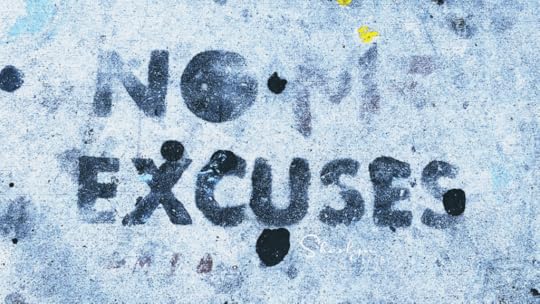
Estimated reading time: 3 minutes
I’m sure that some of you read the title to today’s article and said, “Of course it does!” But the reality is that being flexible all the time can be tiring. If you look up the definition of flexibility, it’s “the ability to be easily modified” and the “willingness to change or compromise”. So, flexibility is about 1) being open to change and 2) having the ability to do it.
As we think about some of the challenges in the workplace right now – recruiting, wellbeing, scheduling flexibility, equity, and turnover – it becomes obvious that organizations need to think about flexibility. And maybe they are, which is great because they’re addressing part number one of flexibility equation – being open to change. The question becomes what about part number two – having the ability to do it.
Sometimes the best way to feel like you can do something is to hear from others who have made the same or similar journey. SAP SuccessFactors recently launched a series called “Forward” to talk about how to deliver a better human experience at work.
Forward is being hosted by Baratunde Thurston and Adam Grant. Thurston is the author of the New York Times bestseller “How To Be Black”. And if you haven’t seen his TED Talk “How to Deconstruct Racism, One Headline at a Time”, it’s worth a watch. Grant is an organizational psychologist and Wharton’s top-rated professor for seven straight years. He’s the host of a popular podcast called WorkLife.
During the Forward series Grant and Thurston talk with human resources and business leaders about the challenges and solutions facing organizations today. I recently listened to a session with Chandra Sanders from The Mom Project talking about the importance of upskilling and supporting working moms. We’ve all seen the articles about how working moms, especially working mothers of color, have been penalized during the pandemic.
And in an interview with Sandy McIntosh from TELLUS, she discusses how the organization is addressing workplace wellbeing. Studies have shown that the pandemic has taken a toll on employee mental health and there’s an expectation that companies should be doing more to support an employee’s wellbeing.
These are just a couple of examples of the conversations happening in the Forward series. I would recommend checking out the others.
The reason I’m sharing this resource with you is because I found hearing real stories from real people about the challenges that we’re all facing to be very relatable. And if I can pull a few nuggets of creative inspiration to help an organization overcome a challenge, then it’s all worth it.
Organizations need to be flexible right now. Being flexible isn’t always easy. Even when we want to be flexible. Sometimes the challenge is finding an idea or case study or story from someone else that will let us know that “we can do it”. That can be exactly the boost we need to create flexibility in our workplace.
Image capture by Sharlyn Lauby while exploring the Wynwood District of Miami, FL
The post Creating a Flexible Workplace Requires . . Flexibility appeared first on hr bartender.





Sharlyn J. Lauby's Blog
- Sharlyn J. Lauby's profile
- 10 followers



